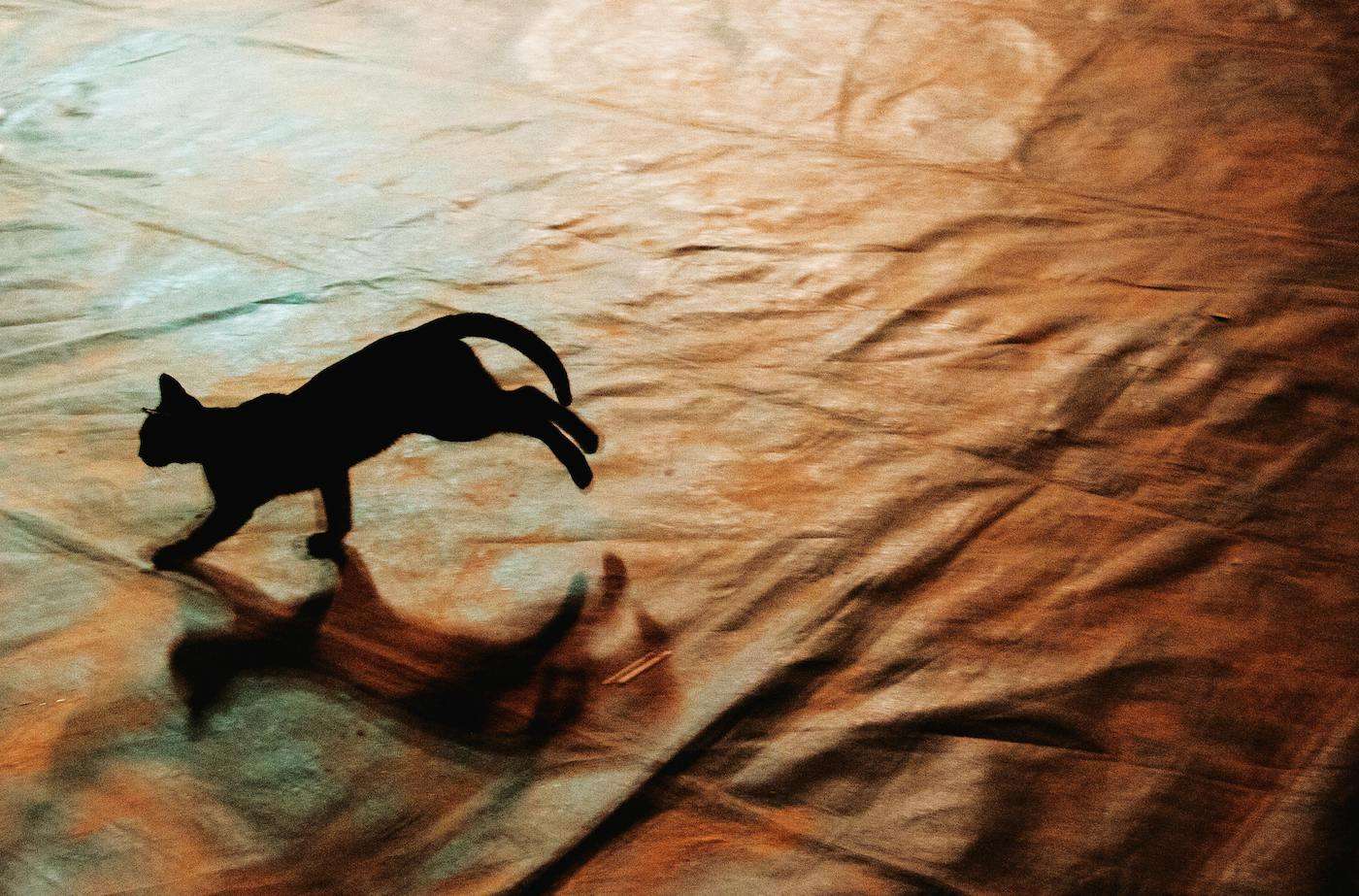If you’ve ever had a dog or cat, you’ve no doubt witnessed an episode of the zoomies—not exactly Tom Cruise sliding across the floor in his socks and underwear in Risky Business, but close. Maybe it was because your pet felt invigorated by the first brisk air of autumn after a long stretch of lethargy-inducing summer heat, or just the opposite: a warm spring day ending months of winter hibernation. Zoomies can also come out of nowhere, as though the critters are simply remedying their own boredom with bursts of self-generated mania. All of a sudden, Spot or Fluffy darts about madly at full tilt, demonstrating their amazing capacities of superhuman acceleration, deceleration and sharp directional change. It’s the kind of erratic motion attributed to UFOs, unfettered by the normal constraints of gravity, momentum and inertia. Such freedom of movement represents an extraordinary and enviable liberation, and our pets can achieve it at will!
 In animals, these abilities astonish us because they appear impossible. Of course, they don’t truly defy the laws of physics, but they certainly exceed our meager limitations. Being able to move with extreme fluctuations in velocity and trajectory is invaluable for survival in the wild, whether we’re talking about a predator in pursuit of nourishment or a prey animal trying to escape inclusion on the menu du jour. The quicker and more agile creature secures an extension on its life—what could be greater cause for exuberant celebration? It’s no surprise our pets exalt in exercising their prowess in this regard. I have to wonder if the exhilaration we experience while riding has a similar source.
In animals, these abilities astonish us because they appear impossible. Of course, they don’t truly defy the laws of physics, but they certainly exceed our meager limitations. Being able to move with extreme fluctuations in velocity and trajectory is invaluable for survival in the wild, whether we’re talking about a predator in pursuit of nourishment or a prey animal trying to escape inclusion on the menu du jour. The quicker and more agile creature secures an extension on its life—what could be greater cause for exuberant celebration? It’s no surprise our pets exalt in exercising their prowess in this regard. I have to wonder if the exhilaration we experience while riding has a similar source.
In his 2008 book, Bodies in Motion: Evolution and Experience in Motorcycling (now only available used, unfortunately), Steven Thompson makes a bold and well-reasoned effort to integrate findings from wide-ranging fields of inquiry, including cultural anthropology, evolutionary biology, emotional neurochemistry, physics, and sociology, to help explain why we love to ride. What is it, precisely, making motorcycl feel fun? Thompson argues this is no trivial question. (You may recognize Thompson as a past writer and editor at Cycle World, Cycle Guide, and Car and Driver; he has raced motorcycles professionally and internationally, and has serious journalistic cred.)
Although he does a superb job of outlining many familiar notions about how riders can be influenced by social and cultural forces, Thompson finds these explanations ultimately inadequate. At a deeper, more fundamental—and more biological than psychological—level, he believes motorcyclists must be motivated by the innate desirability of various physical sensations; that means nature, not nurture, is the bottom line. This premise may at first seem absurdly simple and obvious. What motorcyclist doesn’t already know riding feels good?! But the profound matter is why it feels sooo good. For instance, why should we enjoy leaning into a turn much, much more than traversing its radius upright, like we do sitting in a car?
For Thompson (and other researchers), many of our preferences—indeed, our passions—are firmly rooted in our species’ ancient past. What environmental features, what kinesthetic feelings, and what aptitudes and predilections were relevant to our survival as tree-dwellers who hunted and gathered sustenance? If you accept scientific reasoning, our emergence from what now seems like unimaginable primitivity is actually an extremely recent phenomenon in our eons on this planet, with the vast majority of our history spent consolidating adaptations to conditions and demands wholly different from what we encounter today. Thompson makes the case that unique aspects of the human-motorcycle interface, as well as the full “bodymind” engagement required during riding, hark back to our primeval origins, when life depended upon a type and degree of interaction with the world around us that has become increasingly rare in modern experience, although our bodies are still designed for it and respond to it with eagerness and delight. I won’t attempt to recap Thompson’s analysis here, but as a way to pique your curiosity, consider the similarities between the g-forces you can imagine experiencing while swinging from a vine and those you feel as your suspension compresses in a fast sweeper. This is just one of many intriguing parallels he lays out.

More generally, the visceral sensations of movement carry deep-seated psychological meaning. We might imagine this transfer as one-way, but it’s really a two-way process. Take something as rudimentary as “going forward.” Concretely, these words denote physical movement in the direction faced by our body’s anterior or ventral surface, depending on our posture at the moment. More abstractly, they can mean temporal movement into the future or progress toward a goal. It’s easy to trace concepts like these back to the physical model on which they’re based; metaphors do this all the time and we can’t think or speak without a multitude of such cross-references.
This works the other way around, too. Physically moving in the forward direction often evokes a sense of progress, even when it doesn’t actually serve any particular goal. It can also alter our sense of time frame, transporting us out of one context and into another. We don’t necessarily notice this in any clearly articulated way; it happens at an unconscious, non-verbal level. This is one reason taking a walk when we’re sad or vexed has a refreshing effect. Our bodies (including the senses detecting changing scenery, sounds, smells, temperatures, etc., and the muscles actively effecting those changes) translate this type of movement as deliberately and successfully leaving one situation behind in favor of one ahead. The bodily action occurs first, with the psychological dimension in tow, equating the concrete with the abstract via metaphor—we’re all poets! And, since going forward is typically a part of pursuit rather than retreat, we’re inherently oriented toward the desirable and away from the undesirable. That much feels good by association, or maybe even by definition.
Another way to say this is our bodies express emotions, but they also cause emotions. The coin has two sides and they’re inseparable. Try holding a big smile right now. No matter how forced and artificial your facial expression, you’ll probably nevertheless feel an odd, vague happiness gradually seep into your awareness, unconnected to anything else happening in the present and undeterred by the fact you know it’s completely contrived. Even stationary positions can have powerful emotional effects. Stand at attention, back straight, chest out, chin tucked, feet together. Notice something like pride and courage accompanying that position? Now slouch forward and bow your head, eyes closed. Feel humble? Vulnerable? Resigned? There are countless other examples of this relationship between body and mind, but you get the point.
The Ride Inside with Mark Barnes is brought to you by the MOA Foundation. You can join the BMW Motorcycle Owners of America quickly and easily to better take advantage of the Paul B Grant and Clark Luster programs mentioned in this episode.
Back to the gist of Thompson’s book and the zoomies we observe in our pets. It seems reasonable to infer much of our riding enjoyment is a function of how the accelerating, braking and turning abilities we command from the saddle served us in the distant past—a past living on in our genetic endowment and continues to influence our perceptions and penchants in the present. The sensations of such movement, so greatly enhanced by the prosthetic capabilities of our machines, are synonymous with evading predators and capturing prey. At the most basic level, this is tantamount to survival and life itself. Racing away from danger or toward something we desire may in fact preserve our existence, but even in the absence of threat or a desired object, the racing itself can deliver the feeling of eluding death and acquiring needed supplies. At the very least it confirms our ability to do so when necessary. We don’t normally think of it in those terms, explicitly, and instead just experience a diffuse sense of boosted vitality (implicit aliveness). A good ride can reliably recharge us at this foundational level, perhaps literally all the way down to our DNA.
Again, this works in both directions. If something happens inspiring me and makes me feel more fully and freely alive, I’m automatically compelled to give this bodily expression through movement. I get my own version of the zoomies and want to race around, physically demonstrating my emancipation from the confinement of routines, the blockage of frustrations, or the predetermined arc of some depressing aspect of the past I’ve escaped. Someone else might break into a spontaneous dance, but for me there’s no better way to express such enthusiasm than by zipping all over the place on two wheels! I don’t mean recklessly and unpredictably slicing through traffic, although I might have to rein in an impulse to do so. After all, I do want to live to frolic another day. Spirited riding on a rollercoaster backroad, however, can feel like the perfect match for my jubilantly expansive mood.
This is yet another way motorcycling serves seemingly contradictory purposes: stimulating our sense of vigorous efficacy when it’s lacking, as well as discharging such a feeling when it’s present. Other apparent contradictions include the fact riding can be relaxing one day and exciting the next, or how it provides a means of intense engagement with others, yet also a way to savor solitude. There aren’t many other activities equally well-suited to both offsetting gloom and celebrating sunshine. If our psychological tank is empty, getting frisky on a motorcycle can refill it. If our tank is full, getting frisky gives us a way to use our fuel. Forget all the preceding speculative analysis and theoretical explanations of riding pleasure—just go enjoy. Since that pleasure is based deep within our bodies, it works whether or not we understand why!
Mark Barnes is a clinical psychologist and motojournalist. To read more of his writings, check out his book Why We Ride: A Psychologist Explains the Motorcyclist’s Mind and the Love Affair Between Rider, Bike and Road, currently available in paperback through Amazon and other retailers.


